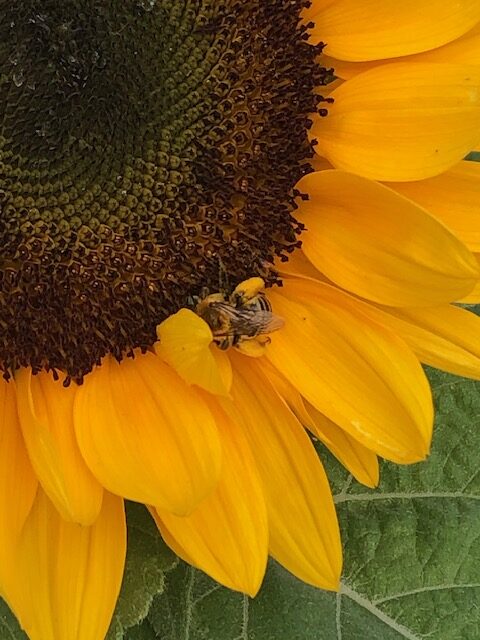Talking Plants
Jillian Patrie | University of Minnesota Yard and Garden Extension
Creating a multi-purpose landscape can provide humans, animals, and insects with a space to enjoy all year around and incorporating edible plants, shade trees, blooming plants, and water features can bring a yard to its full potential. Here are a few ideas on how to create an outdoor oasis that can be enjoyed in all four seasons.
Add raspberries, strawberries, juneberries, grapes, and other small fruit shrubs to your landscape for snacking and jellies. Asparagus and Rhubarb are perfect perennials to create an easy-care edible garden. Fruit trees, like apple, pear, plum, cherry and apricot (yes apricot!) can provide you with a personal orchard. When shopping for fruit trees, be sure to note if you have other fruit trees in your neighborhood. If not, depending on the type of fruit tree or shrub, you may need to buy two for pollination. Besides the harvest provided to humans, many pollinators visit fruit tree blossoms in the spring, providing them with the first nectar of the season.
Did you know that many perennial and annual flowers are edible too? Besides providing pollinators with the necessary nectar and pollen, many flowers and parts of ornamental plants can be eaten. Daylily buds and lemon gem marigold flowers are perfect atop a salad. Summer squash flowers can be stuffed and fried and why not add in the squash to go along with the flowers? If herb gardening is your passion, saving a space in your garden for herbs or containers on your patio is a great way to incorporate them into dishes. Nasturtium flowers can add a peppery flavor and pansy flowers have a sweet, lettuce taste.
Berry bushes, trees, perennials, and annuals can provide food for birds as well. Adding in fruit or seed-bearing bushes and flowers will feed birds all season long. Plant sunflowers, coneflowers, sedum, zinnia and many more, leave them standing in the fall to provide shelter and food. Viburnum, chokeberry, dogwood and many more shrubs will provide food and shelter for birds. Shrubs can be used as natural fences that provide privacy and block winter winds. Red twig dogwood and tall prairie grasses can provide winter interest to your landscape too.
When creating a landscape, consider a source of water for butterflies, birds, and bees, they need a drink on a hot summer day too! Shallow water bowls are best for bees and butterflies, remember to add a flat rock that is out of the water so they can take a rest while they drink.
With a little bit of planning, a landscape with many functions can be accomplished. While designing, remember the “right plant for the right place” motto. Make sure to consider the location and the hardiness of each plant, to ensure a long-lasting landscape.
*Please note that not all berries and plants are edible, please research plants that are safe for human consumption. Do NOT eat fruit or parts of plants if you are unsure if it is safe to eat.
If you would like to learn more about edible landscape plants or growing your own bird seed visit https://extension.umn.edu/. For questions about this article or yard and garden help, contact your local Clay County Extension Educator Jill Patrie at patri350@umn.edu or by phone at 218-299-7338.



